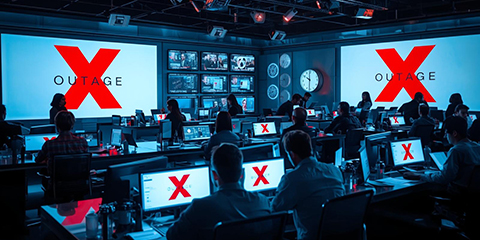The shift from text to video reshapes journalism standards
JournalismPakistan.com | Published 1 hour ago | JP Special Report
Join our WhatsApp channel
The rapid move toward video-led news is reshaping newsroom practices, prompting new questions about accuracy, ethics, verification, and how journalists maintain standards in fast-paced digital environments.Summary
ISLAMABAD — Newsrooms around the world are steadily shifting from text-based reports to video-first storytelling as platforms increasingly reward visual content. This evolution is transforming how journalists gather information, verify facts, and deliver news to audiences who expect faster and more engaging formats.
Although video allows for immersive storytelling, experts caution that the format also brings challenges in maintaining the accuracy and rigor traditionally associated with text reporting.
The rise of platform-driven news consumption
The growth of video consumption has been accelerated by social platforms that prioritize short clips and algorithm-friendly formats. This shift has prompted news organizations to restructure workflows, assign more staff to multimedia teams, and integrate video editors directly into editorial processes. The pressure to produce rapid-turnaround video segments has also raised questions about maintaining verification standards while meeting the speed demands of digital platforms.
Balancing speed with credibility
Video journalism introduces a unique set of verification hurdles. Visual material is often sourced from users, requiring detailed checks on authenticity, time, and location. Unlike text, where errors can be corrected discreetly, mistakes in video are harder to amend once published. Newsrooms are therefore developing stricter review processes, including mandatory metadata checks and additional editorial oversight for visual content.
Evolving skill requirements for journalists
Reporters now need a broader skill set, including on-camera presence, basic video editing, and comfort with visual scripting. Many media organizations are investing in training programs to help journalists adapt to these demands while maintaining accuracy and ethical standards. The rise of AI-assisted editing tools is also changing workflows, though editors emphasize that such tools must be used responsibly.
Impact on newsroom ethics and accountability
The emphasis on visual impact can sometimes encourage sensationalism or selective framing. Experts highlight the need for clear guidelines on editing, context, and transparency to ensure that video content adheres to the same standards of fairness and accuracy expected of text-based reporting.
Looking ahead
As audiences increasingly consume news on mobile devices, video will remain a central part of newsroom strategies. However, industry leaders stress that the core principles of journalism—verification, fairness, and responsibility—must guide this transition to ensure trust is not compromised in the pursuit of engagement.
KEY POINTS:
- Newsrooms are shifting from text-based reporting to video-led storytelling
- Rapid video production increases pressure on verification and accuracy
- Journalists require expanded skill sets, from on-camera work to editing
- Ethical concerns include sensationalism and selective visual framing
- Standards of fairness and verification remain essential in video journalism























